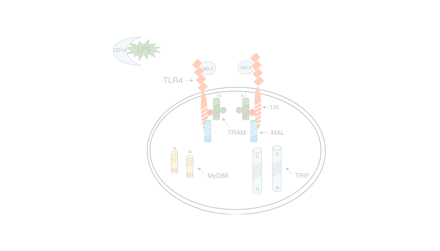TLRs: Differential Adapter Utilization by Toll-Like Receptors Mediates TLR-Specific Patterns of Gene Expression
Abstract
In response to microbial or environmental “danger” signals, represented by structural motifs not normally expressed by cells, Toll-like receptors mediate intracellular signaling that leads to inflammatory gene expression. In response to agonists, TLR aggregation enables the recruitment and/or activation of TLR-specific adapter molecules. To date, four adapter proteins have been identified: MyD88, TIRAP/Mal, TRIF/TICAM-1, and TIRP/TRAM/TICAM-2. The interaction of the different TLRs with distinct combinations of adapter molecules creates a platform to which additional kinases, transacting factors, and possibly other molecules are recruited, events that lead, ultimately, to gene expression. Given the rapidity with which such interactions have been described, we have attempted to summarize our current understanding of the adapters that are so essential for TLR signaling and provide a working model for future studies.

- © American Society for Pharmacology and Experimental Theraputics 2003



